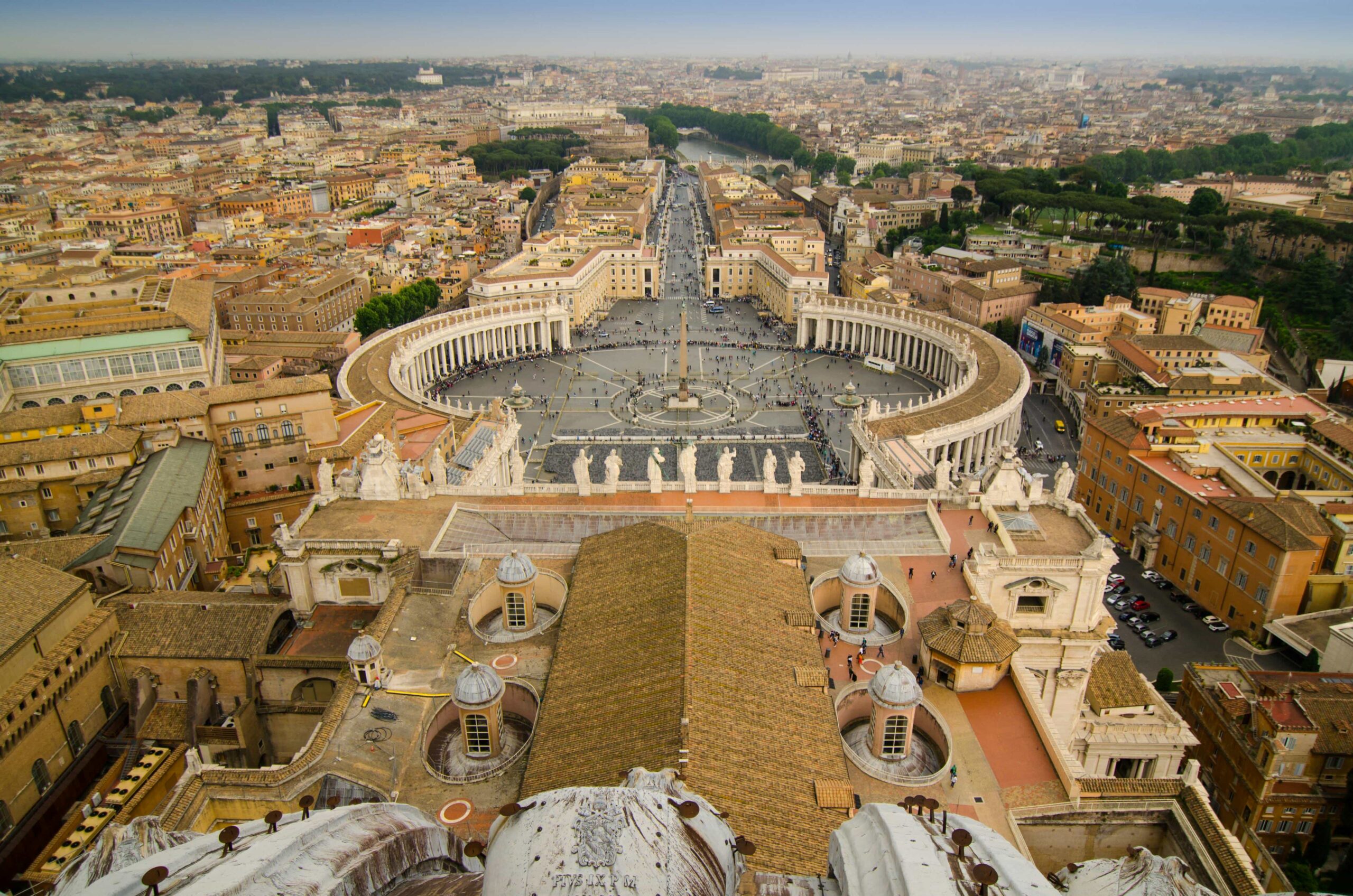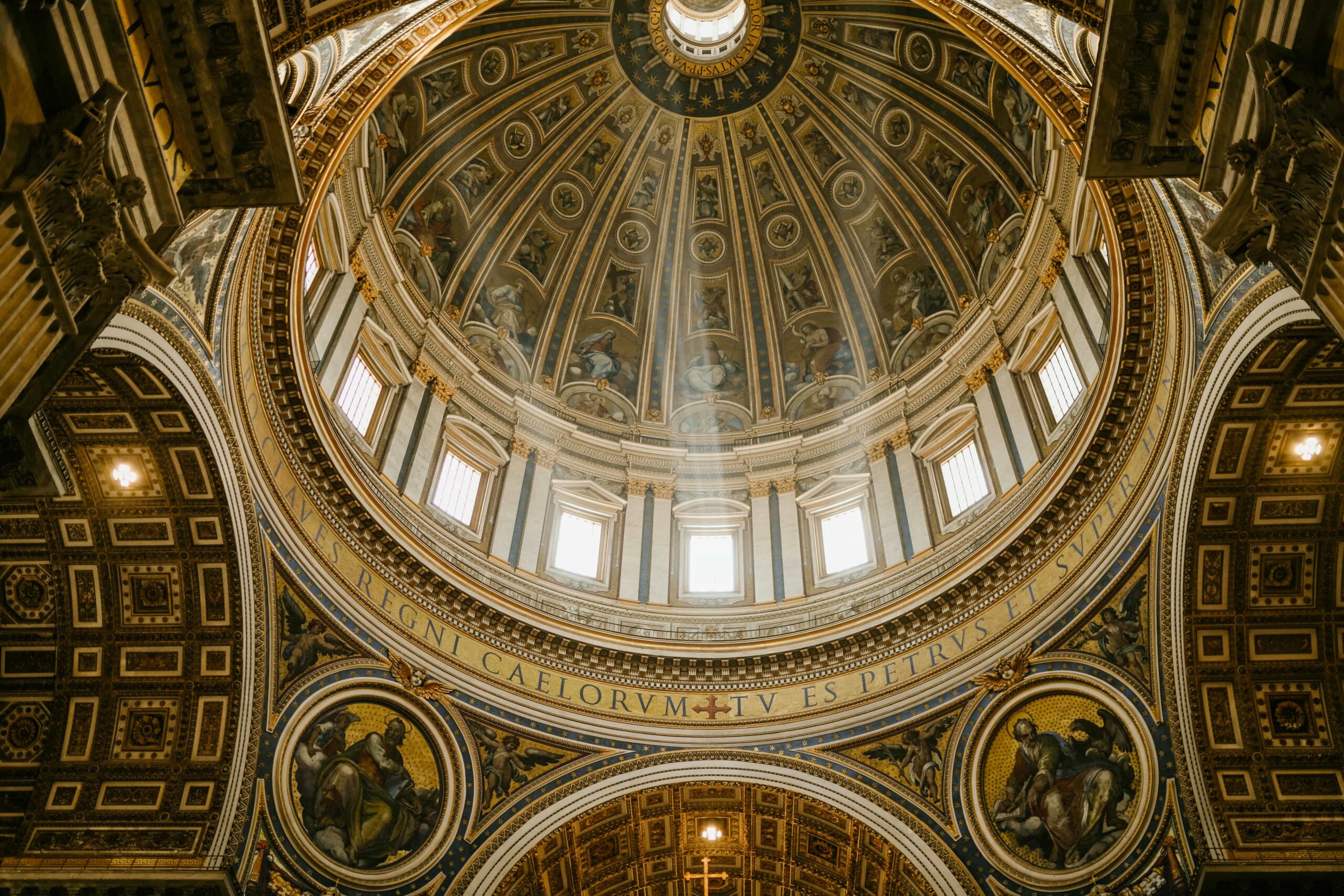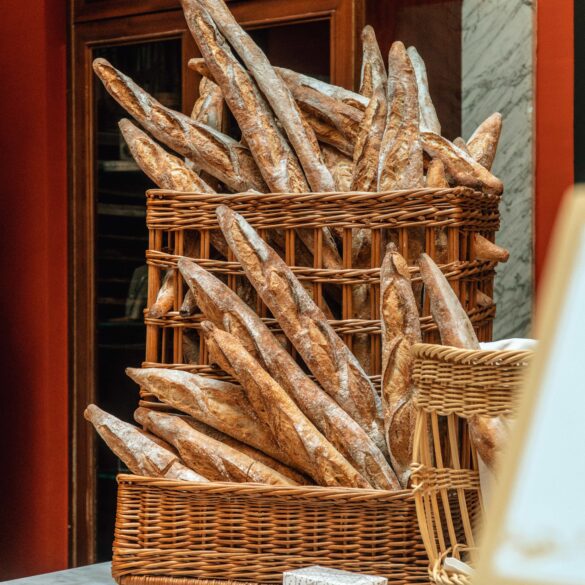Vatican City: The Ultimate Guide to the World’s Smallest Country
Picture this: you’re standing in St. Peter’s Square, craning your neck to admire Michelangelo’s masterpiece dome, when it hits you—you’re actually in a completely different country. Not just any country, mind you, but the world’s smallest sovereign nation. That’s Vatican City for you, and honestly? It never stops amazing me how much history, art, and spiritual significance can be packed into just 0.17 square miles.
I’ll be completely honest—when I first started researching Vatican City years ago, I thought it was simply part of Rome. Boy, was I wrong. This tiny nation-state is so much more complex and fascinating than most people realize. It’s got its own postal system, railway station (the shortest in the world, actually), and even mints its own euros. Plus, there’s the small matter of it being the spiritual center for over 1.3 billion Catholics worldwide.
What Exactly Is Vatican City?
Let me clear up the confusion right away—Vatican City isn’t just a neighborhood in Rome or some fancy church complex. It’s an actual, legitimate country. The smallest one on Earth, to be precise. We’re talking about a place that’s roughly one-eighth the size of New York’s Central Park, yet it operates as a fully independent nation with its own government, laws, and even diplomatic relations with 183 countries worldwide1.
Quick Vatican City Facts
Official Name: Vatican City State (Stato della Città del Vaticano)
Area: 0.17 square miles (0.44 square kilometers)
Population: Approximately 800 residents
Official Languages: Italian and Latin
Currency: Euro
Established: February 11, 1929
What strikes me most about Vatican City is how it manages to be both ancient and surprisingly modern. Yes, you’ve got buildings that date back to the 4th century, but you’ll also find a railway station (granted, it’s only 300 meters long), a post office that’s actually more efficient than Italy’s, and one of the world’s most advanced astronomical observatories2.
From Ancient Beginnings to Sovereign Nation
Here’s where things get fascinating—and honestly, a bit complicated. The area we now call Vatican City has been significant for Catholics since around 64 AD, when St. Peter was allegedly crucified and buried there. But the story of how it became an independent country? That’s a whole different tale involving Italian politics, papal power struggles, and some seriously savvy diplomatic maneuvering.
Back in the day—we’re talking about the Middle Ages here—the Pope controlled vast territories across central Italy called the Papal States. These weren’t just spiritual domains; they were actual political territories with armies, taxes, and all the trappings of temporal power. I find it remarkable how the papacy managed to maintain both spiritual and political authority for over a thousand years3.
Then came 1870, and everything changed. The newly unified Kingdom of Italy decided they wanted Rome as their capital, which meant taking it from the Pope. Pope Pius IX wasn’t having it—he declared himself a “prisoner in the Vatican” and refused to leave. For nearly sixty years, there was this bizarre standoff where the Pope controlled just a few buildings while claiming sovereignty over territories he’d lost.
The solution came in 1929 with the Lateran Treaty, signed by Pope Pius XI and Italian dictator Benito Mussolini. It’s one of those historical ironies that still gives me pause—the Catholic Church’s independence was secured by negotiating with a fascist leader. The treaty created Vatican City as we know it today, guaranteeing the Pope’s sovereignty over this tiny enclave4.
How Vatican Government Actually Works
Okay, so here’s where Vatican City gets really interesting from a political science perspective. It’s an absolute monarchy—one of the last remaining ones in Europe, actually. But unlike other monarchies where power passes through family lines, Vatican City has an elective monarchy. Every time a Pope dies or resigns, the College of Cardinals locks themselves in the Sistine Chapel and votes for a new leader. No democracy, no parliament, just Cardinals and lots of prayer5.
The Vatican’s Unique Government Structure
The Pope serves as absolute sovereign with executive, legislative, and judicial powers. During sede vacante (when the papal throne is empty), the College of Cardinals temporarily governs. Day-to-day administration falls to the Pontifical Commission for Vatican City State, while the Secretariat of State handles foreign relations.
What really fascinates me is how efficiently this system works despite its complexity. The Pope delegates authority through various institutions—there’s the Pontifical Commission for Vatican City State (think of it as a city council), the Governorate (essentially the mayor’s office), and dozens of departments handling everything from Vatican Museums to the papal household6.
| Position | Role | Current Holder | Appointment |
|---|---|---|---|
| Supreme Pontiff | Absolute Sovereign | Pope Francis | Elected by Cardinals |
| Secretary of State | Chief Minister | Cardinal Pietro Parolin | Papal appointment |
| President of Commission | Governor | Cardinal Giuseppe Bertello | Papal appointment |
The citizenship situation is fascinating too—and pretty exclusive. You can’t just apply for Vatican citizenship like other countries. Instead, citizenship is typically granted to Cardinals residing in Vatican City, diplomats of the Holy See, and certain other officials. Most residents hold temporary citizenship that expires when their role ends. There are only about 450 Vatican citizens worldwide, making it arguably the most exclusive citizenship on Earth7.
The Spiritual Heart of World Catholicism
Let’s be honest—Vatican City’s political structure is interesting, but what really draws millions of visitors annually is its profound spiritual significance. This tiny nation serves as the spiritual headquarters for roughly 1.3 billion Catholics worldwide. That’s nearly one in six people on the planet looking to this place for religious guidance and leadership.
St. Peter’s Basilica alone tells an incredible story. Built over the supposed burial site of St. Peter—the apostle Jesus called “the rock” upon which he’d build his church—this isn’t just another pretty cathedral. It’s quite literally built on the foundation of Christianity. The current basilica took over 120 years to complete (1506-1626), with contributions from legendary artists like Bramante, Michelangelo, and Bernini8.
Then there’s the Sistine Chapel, which honestly still gives me chills every time I think about it. Sure, everyone knows about Michelangelo’s ceiling—and rightfully so, because it’s absolutely breathtaking. But the Chapel serves a much more significant purpose: it’s where Popes are elected. When you see that famous white smoke rising from the Chapel’s chimney, you’re witnessing one of the world’s most ancient and secretive electoral processes9.
A Treasury of Renaissance Masterpieces
I have to admit something—before my first visit to Vatican City, I thought I knew what to expect from the art collections. Boy, was I unprepared. The Vatican Museums house one of the world’s greatest art collections, accumulated over more than 500 years by various Popes. We’re talking about 54 galleries with over 70,000 works of art, though only about 20,000 are on display at any given time10.
What strikes me most isn’t just the quantity—it’s the quality and historical significance. The Raphael Rooms showcase some of the Renaissance master’s greatest works, including “The School of Athens,” which perfectly captures the Renaissance spirit of combining classical philosophy with Christian thought. Meanwhile, the Gallery of Maps features incredibly detailed 16th-century maps of Italy that are both artistic marvels and historical documents.
- Sistine Chapel ceiling and “The Last Judgment” by Michelangelo
- Raphael Rooms featuring “The School of Athens”
- Classical sculptures in the Pio-Clementino Museum
- Renaissance tapestries in the Gallery of Tapestries
- Ancient Roman and Greek artifacts throughout various galleries

Planning Your Vatican City Visit: What You Need to Know
Alright, let’s get practical. Planning a Vatican visit can feel overwhelming—trust me, I’ve been there. The key is understanding that Vatican City isn’t just a place you casually stroll into. With over 6 million visitors annually, this tiny nation sees more tourists per square meter than anywhere else on Earth11.
First things first—tickets. You absolutely need to book in advance, especially during peak season (April through October). I learned this the hard way during my first visit when I stood in line for nearly four hours in the July heat. The Vatican Museums require timed entry tickets, which you can purchase online up to 60 days in advance. Pro tip: book the earliest time slot available. Not only will you avoid crowds, but the morning light streaming through the galleries creates absolutely magical photography conditions.
Essential Booking Information
Vatican Museums: €17 online (€8 reduced rate for students)
St. Peter’s Basilica: Free entry, but dome climb costs €10 (elevator) or €8 (stairs)
Papal Audience: Free tickets available online, but arrive early for good seats
Best booking window: 8-10 weeks in advance for peak season
Here’s something that surprised me during my research—you can actually take multiple types of tours. Standard group tours are fine, but I’m personally partial to the early morning VIP tours. Yes, they cost more (around €70-80), but you get access before the general public, smaller group sizes, and often better guides. The “Breakfast at the Vatican” experience is particularly special—imagine having coffee in the Pinecone Courtyard while watching the sun rise over St. Peter’s dome.
| Tour Type | Duration | Price Range | Best For |
|---|---|---|---|
| Self-Guided | 2-4 hours | €17-25 | Independent travelers |
| Group Tour | 3 hours | €45-65 | First-time visitors |
| VIP Early Access | 4 hours | €75-120 | Photography enthusiasts |
| Private Tour | 3-6 hours | €200-500 | Personalized experience |
Transportation is another crucial consideration. Vatican City sits right on the edge of Rome’s historic center, easily accessible by metro, bus, or taxi. The Ottaviano-San Pietro metro station (Line A) is probably your best bet—it’s about a 5-minute walk to St. Peter’s Square. If you’re staying in central Rome, walking is absolutely doable and quite pleasant, especially along the Tiber River.
Dress Codes and Cultural Sensitivity
Let me be completely honest here—Vatican City takes dress codes seriously, and I mean seriously. This isn’t like some restaurants where they might have a “business casual” suggestion. The Vatican has strict requirements that are actively enforced by security at every entrance12.
For both men and women, this means no shorts, no sleeveless tops, no low-cut clothing, and no mini-skirts. Knees and shoulders must be covered at all times. I’ve seen people turned away at the entrance, and trust me, it’s not pleasant when you’ve traveled thousands of miles and waited in line for hours. The good news? You can usually buy appropriate clothing from vendors outside the Vatican, though it’ll cost you a premium.
- Men: Long pants (no shorts), collared shirt preferred, closed-toe shoes
- Women: Pants or skirts below the knee, shoulders covered, modest necklines
- Everyone: No hats inside buildings (except religious head coverings)
- Special consideration: Bring a light shawl or cardigan for air-conditioned spaces
Beyond clothing, there are behavioral expectations too. Photography is generally allowed in most areas (except the Sistine Chapel—seriously, don’t even try), but flash photography and video recording are often prohibited. Keep your voice down, especially in St. Peter’s Basilica and during any religious services. Remember, this isn’t just a museum—it’s an active place of worship where people come for spiritual reasons.
One thing that really impressed me during my visits is how respectful most tourists are once they understand the context. Yes, there are always a few people who seem oblivious to their surroundings, but the majority of visitors—regardless of their personal religious beliefs—recognize they’re in a special place and act accordingly.
If you’re planning to attend a papal audience (which I highly recommend), arrive early and bring a rosary or religious item if you have one. Pope Francis often blesses these items from afar during general audiences. It’s also worth noting that papal audiences are conducted primarily in Italian, with brief summaries in other languages, so don’t worry if you don’t speak Italian13.
Beyond the Tourist Trail: Vatican’s Hidden Treasures
Here’s what most guidebooks won’t tell you—some of Vatican City’s most remarkable experiences happen away from the main tourist routes. During my years of researching and visiting the Vatican, I’ve discovered that the real magic often lies in the details most people rush past.
Take the Vatican Gardens, for instance. These spectacular landscaped gardens cover about half of Vatican City’s territory, but they’re only accessible through special guided tours that must be booked weeks in advance. The gardens feature everything from medieval walls to modern sculptures, with the Pope’s private helicopter pad tucked discretely among the greenery. The views of St. Peter’s dome from the gardens are absolutely breathtaking and completely different from what you’ll see anywhere else14.
Another hidden gem? The Vatican’s secret archives—though they’re not really “secret” anymore since Pope Francis renamed them the “Vatican Apostolic Archives” in 2019. While public access is extremely limited, researchers and scholars can apply to study documents dating back over 1,000 years. These archives contain some of history’s most significant documents, including letters from Michelangelo complaining about his payment for the Sistine Chapel ceiling15.
- Vatican Necropolis: Ancient Roman cemetery beneath St. Peter’s Basilica
- Niccoline Chapel: Rarely visited frescoes by Fra Angelico
- Vatican Observatory: Modern astronomical research facility
- Papal Apartments: Historical papal living spaces (limited access)
Modern Vatican: Tradition Meets Contemporary Relevance
What fascinates me most about Vatican City today is how it balances ancient traditions with modern realities. Pope Francis has brought significant changes to this institution, from environmental initiatives to financial transparency reforms. The Vatican now operates solar panels, has implemented extensive recycling programs, and even maintains an organic garden that supplies the papal kitchen16.
Technology plays an increasingly important role too. The Vatican maintains active social media accounts in multiple languages, streams papal events globally, and has digitized thousands of manuscripts for online access. It’s quite remarkable watching an institution that traces its roots to the first century CE embrace modern communication methods while preserving its essential character.
Looking ahead, Vatican City faces interesting challenges. How does the world’s smallest country maintain its independence while engaging with global issues like climate change, immigration, and social justice? Pope Francis has positioned the Vatican as a moral voice on international issues, hosting climate conferences and advocating for refugees. It’s fascinating watching a medieval institution grapple with 21st-century challenges.
Final Thoughts: Why Vatican City Matters
After all my research and visits, I keep coming back to one central truth about Vatican City—it’s simultaneously the most influential tiny nation on Earth and an intimate space where individual faith meets universal human experiences. Whether you’re Catholic, another faith tradition, or purely interested in art and history, Vatican City offers something profound.
The sheer concentration of human achievement within these walls is staggering. Renaissance masterpieces, architectural marvels, and spiritual traditions all coexist in a space smaller than most city parks. But what really moves me is the human element—watching pilgrims pray in St. Peter’s Basilica, seeing art students sketching in the museums, observing the quiet dedication of Vatican employees who maintain this extraordinary place.
If you’re planning a visit, remember that Vatican City rewards preparation and patience. Book in advance, dress appropriately, arrive early, and allow yourself time to simply observe and reflect. This isn’t a place to rush through—it’s a destination that reveals its treasures gradually to those willing to look beyond the obvious tourist sights.
Most importantly, approach Vatican City with respect and openness. You don’t need to be Catholic to appreciate its significance, but you do need to recognize that you’re visiting one of humanity’s most remarkable cultural and spiritual achievements. In our increasingly connected yet fragmented world, Vatican City stands as a reminder of what human beings can create when faith, art, and dedication converge over centuries.
References and Sources



